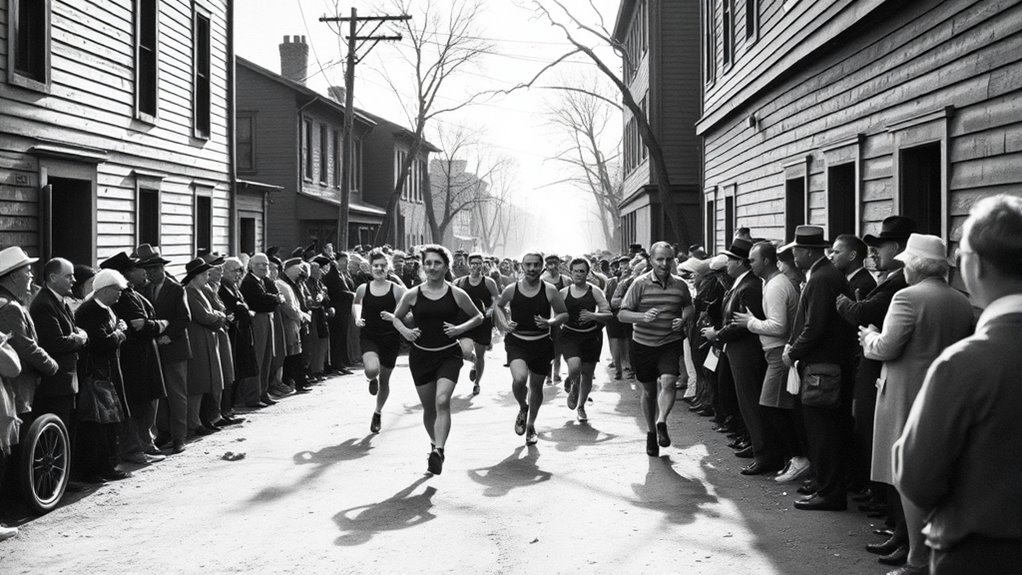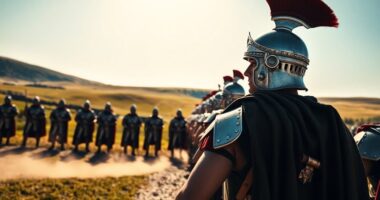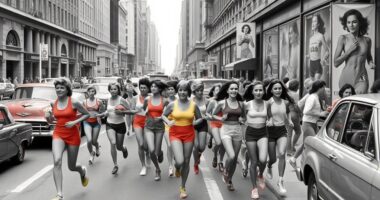The first Boston Marathon started in 1897, inspired by marathon races gaining popularity after the 1896 Olympics. It was created to showcase American athleticism and build community pride. The race was small, about 24.5 miles, with fewer than 20 runners, and relied heavily on volunteers. Over time, it grew in popularity and organization, becoming a symbol of endurance and perseverance. If you’re curious about how it evolved, there’s more to discover behind its historic beginning.
Key Takeaways
- The first Boston Marathon was held in 1897, inspired by the marathon’s inclusion in the 1896 Olympics.
- It was initiated by the Boston Athletic Association to promote athleticism and community spirit.
- The race covered approximately 24.5 miles from Ashland to Boston’s city center with minimal official support.
- Early races featured fewer than 20 runners, relying on volunteers and basic course marking.
- It established a tradition of endurance, eventually evolving into a prestigious international marathon.

Have you ever wondered how the Boston Marathon began? The story starts in 1897, during a time when marathon history was still being written. The idea of a long-distance race to test endurance and stamina captivated many sports enthusiasts, especially after the marathon became an Olympic event in 1896. Boston, known for its rich sporting traditions, decided to host its own race to showcase American athleticism. What started as a small, local event quickly grew into an international tradition, drawing runners from across the globe. The organizers wanted to create a race that would not only challenge competitors but also promote community spirit and athletic excellence. Back then, the logistics of the race were quite different from today. There were no official timing systems or aid stations, so runners relied on their own preparation and local volunteers for support. The course was roughly 24.5 miles, starting in Ashland and ending in Boston’s city center, a route that tested stamina and mental toughness. The race’s logistics involved coordinating volunteers to mark the course, set up water stations, and ensure safety, a monumental task considering the limited technology and infrastructure available at the time. You can imagine the excitement and chaos on race day, with local spectators lining the streets, cheering on the participants, and a handful of runners pushing themselves to the limit. The event was organized by the Boston Athletic Association, which aimed to promote physical fitness and foster a sense of community among runners. The first race drew fewer than 20 competitors, but it marked the beginning of what would become one of the most prestigious marathons worldwide. Over the years, race logistics evolved: official timing was introduced, aid stations became more sophisticated, and the course was standardized to ensure fair competition. Despite these changes, the spirit of that first race remained—challenging runners to test their limits and unite communities through sport. The inaugural Boston Marathon set the stage for a tradition that would grow exponentially, turning into a symbol of perseverance and endurance. Today, it’s a global event, but it all started with a simple idea rooted in marathon history: a race to challenge the human spirit. Knowing its origins helps you appreciate the effort behind each race, from logistics to the runners’ determination. Interestingly, the marathon’s history continues to influence marathon culture, inspiring new generations of endurance athletes worldwide.
Frequently Asked Questions
Who Was the Winner of the First Boston Marathon?
You learn that the winner of the first Boston Marathon was John J. McDermott, a dedicated runner with a strong marathon history and inspiring runner profiles. As you explore marathon history, you’ll see how McDermott’s victory set the stage for future races. His perseverance and skill exemplify the spirit of marathon running, making him a legendary figure in race history. His achievement remains a key milestone in Boston Marathon lore.
How Many Runners Participated in the Inaugural Race?
You should know that 15 runners participated in the inaugural Boston Marathon, a key event in marathon history that marked the beginning of organized race events in the United States. The race organization was simple but effective, setting the stage for future marathons. By understanding how many runners took part, you gain insight into the early enthusiasm and community support that helped shape the marathon’s long-standing tradition.
What Was the Original Route of the First Marathon?
You should know that the original marathon route in 1897 followed a historical course from the outskirts of Boston to the city’s state house. It stretched approximately 24 miles, starting in Ashland and passing through Framingham before reaching downtown Boston. This historic course was designed to honor the legendary run of Pheidippides and set the foundation for what would become one of the world’s premier marathon events.
Were There Any Notable Incidents During the First Race?
During the first marathon, you see that race day surprises included a few runners experiencing fatigue and minor injuries, but nothing major disrupted the race. Spectator safety was a concern, and organizers took measures to keep crowds at a safe distance. Overall, the race went smoothly, setting a precedent for future marathons, and showing that with proper planning, race day surprises and spectator safety can both be effectively managed.
How Has the Race Evolved Over the Years?
Over the years, you’ve seen the Boston Marathon evolve with marathon technology like advanced timing systems, improved hydration gear, and lightweight footwear. Race traditions, such as the iconic red and white bibs and the cheering crowds, remain essential. These innovations and customs blend to enhance your experience, making the race more efficient and memorable while honoring its historic roots. The marathon continues to grow, inspiring runners worldwide.
Conclusion
You’ve seen how the first Boston Marathon began with determination, sparked with excitement, and built on tradition. You’ve learned about the runners’ courage, the race’s history, and the spirit that still lives on today. You’ve witnessed how perseverance fuels progress, how community unites through challenge, and how a single race can inspire generations. Keep that energy alive—embrace the challenge, celebrate the journey, and carry the marathon’s legacy forward with every step you take.









